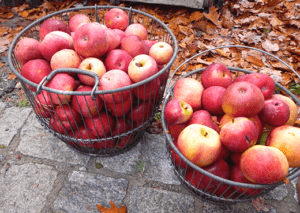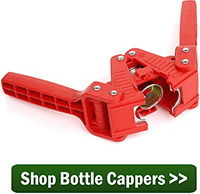 After several weeks of fermentation, it’s time to bottle my hard apple cider.
After several weeks of fermentation, it’s time to bottle my hard apple cider.
Just as a refresher, I took five gallons of apple juice, pasteurized the juice and pitched the yeast, and then divided it into three separate fermenters for secondary fermentation: one plain, one dry-hopped, and one with blueberry and cardamom.
Unfortunately, the blueberry and cardamom batch became infected. I took measures to stave off the infection, but I probably could have been more timely and/or aggressive with my efforts. Today, I decided to just dump the blueberry cardamom batch. I gave it a taste and while it may well have passed as drinkable, in my head I would’ve known that it wasn’t as good as it could have been. In the end, dumping a few bottles (less than a gallon) worth of cider isn’t the end of the world. I’m not going to worry about it, and instead I’ll just learn from my mistakes and move on. I think next time I would wait a little longer to add the fruit and spices, and maybe make a blueberry syrup or extract instead of using whole fruit.
Meanwhile, my other two hard apple ciders look and taste pretty good, so I’m going to go ahead and bottle. The only thing is that they are very hazy, which is weird, because the infected cider was nearly crystal clear. Who can explain that phenomenon? Next time I make a cider, I’ll do a proper cold crash to see if it will clear. The good news is, as far as I can tell, there’s no infection.
So on to bottling…
 When bottling split batches like this, it’s essential to use a priming sugar calculator. This will help make sure that you have enough carbonation and also don’t over prime and end up with a bottle bomb. The bottling process takes a little longer for the split batches, simply because you have to add the priming sugar, bottle, rinse, and repeat. Still, I think I finished bottling in just about an hour.
When bottling split batches like this, it’s essential to use a priming sugar calculator. This will help make sure that you have enough carbonation and also don’t over prime and end up with a bottle bomb. The bottling process takes a little longer for the split batches, simply because you have to add the priming sugar, bottle, rinse, and repeat. Still, I think I finished bottling in just about an hour.
Now here’s a timesaving bottling tip: Line up your bottles single file, then put caps in place. Then you can go down the line and quickly cap each bottle in succession. (You might do this in several rows.)
After tasting the hydrometer samples, I’m pretty excited about the plain hard apple cider: dry, but with plenty of apple flavor and some vanilla notes. The hopped apple cider is good too, but I think it will really shine once it’s bottled, carbonated, and chilled.
The one thing I’d like to figure out is how long to age the cider. I’ve heard that hard apple cider can take a year to really peak, but I’ve also heard that using ale yeast (like I did), can lead to a drinkable product a lot sooner. I guess I’ll just have to taste ‘em as I go and find out!
Do you like to make hard apple cider? What advice do you have for fermenting and bottle conditioning?
Series: Part 1 | Part 2 | Part 3
—————————————————————–
David Ackley is a beer writer, homebrewer, and self-described “craft beer crusader.” He holds a General Certificate in Brewing from the Institute of Brewing and Distilling and is founder of the Local Beer Blog.
